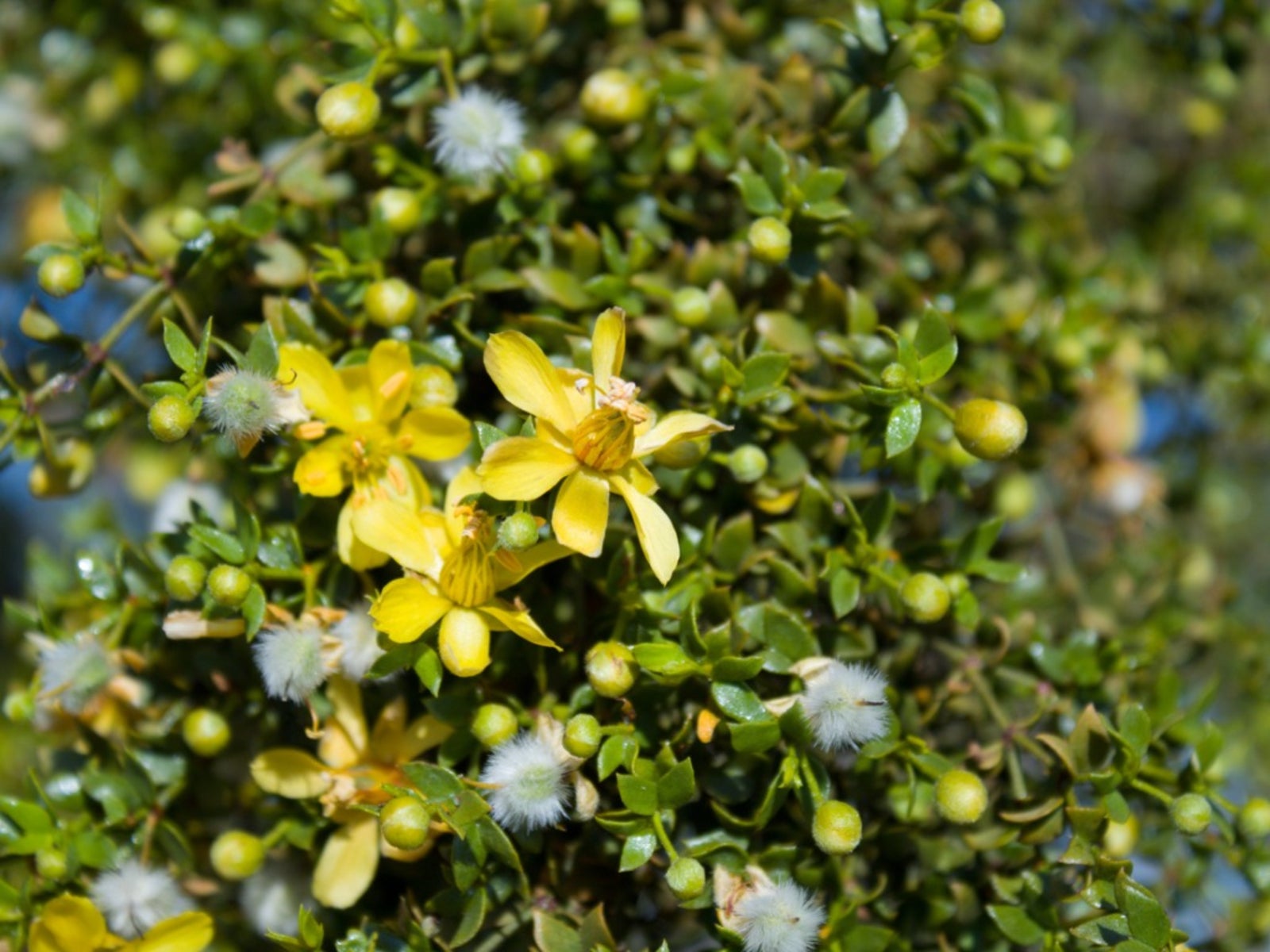Creosote Bush Care - Tips For Growing Creosote Plants


Creosote bush (Larrea tridentata) has an unromantic name but possesses wonderful medicinal properties and fascinating adaptive abilities. This bush is unusually well suited to arid desert periods and is predominant in parts of Arizona, California, Nevada, Utah and other North American desert areas. It is not common to grow creosote in the garden in most areas, but it can be an important and interesting part of a native landscape in desert garden regions. Here is a little creosote bush information so you can decide if this amazing plant is right for your yard.
Creosote Bush Information
Another name for this plant is greasewood. The unappealing name is referring to the large bush's sticky resin-coated leaves that carry a strong smell that releases in warm desert rains, permeating the entire area with the characteristic scent. Creosote bush can live for 100 years and produces flowers most of the year followed by strange fuzzy silver fruits. The plant may get up to 13 feet (3.9 m.) tall and is comprised of slim, brown twiggy branches covered with alternate glossy yellowish-green leaves. The primary method for growing creosote plants is from rhizomes and seeds.
Creosote in the Garden
Creosote bush is not commonly available at garden centers and nurseries, but you can grow it from seed. The plant produces fuzzy capsules containing the seed. The method for growing creosote plants requires soaking seeds in boiling water to break through the heavy seed coat. Soak them for a day and then plant one seed per 2-inch (5 cm.) pot. Keep the seeds lightly moist until germination. Then move them to a warm, sunny location and grow them on until there is a full set of roots. Place the pots outside to acclimate for a few days and plant the seedlings in an amended bed with plenty of sand or gritty material worked into it. Water them until the bushes are established. Use creosote bushes as part of a xeriscape landscape, border plant, rockery plant or just as part of a habitat restoration.
Creosote Bush Care
Creosote bush care couldn't be simpler if your garden has well drained soil and blazing hot sun. Provide these native plants with a sunny, warm location. The bushes have no common disease or pest issues with the exception of creosote gall. Creosote bushes are desert plants and require similar conditions. While you might be tempted to water the plant, it will grow tall and gangly, so resist the urge! Neglectful gardening is the key to a healthy, compact bush. It will reward you with fragrant yellow flowers in spring.
Pruning a Creosote Bush
The jointed stems give the plant a skeletal appearance and the branches are brittle and prone to breaking. This means pruning a creosote bush is important to its health and structure. Remove dead wood at any time of the year and give it a thinning when necessary. You can also cut it back to almost ground level if the plant is old and rangy. This will force thick compact growth the following spring. Occasionally, gardeners will try to shape the plant. Fortunately, creosote bush is very tolerant of hack pruning. This is a marvelous native desert plant that translates to dry home landscapes with sunny, hot days and cool nights.
Sign up for the Gardening Know How newsletter today and receive a free copy of our e-book "How to Grow Delicious Tomatoes".

Bonnie Grant is a professional landscaper with a Certification in Urban Gardening. She has been gardening and writing for 15 years. A former professional chef, she has a passion for edible landscaping.